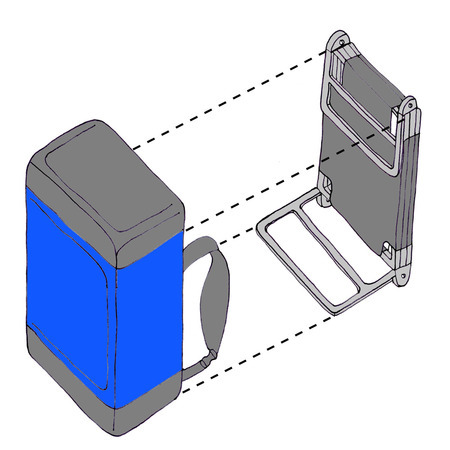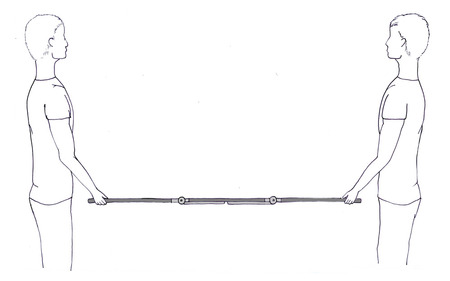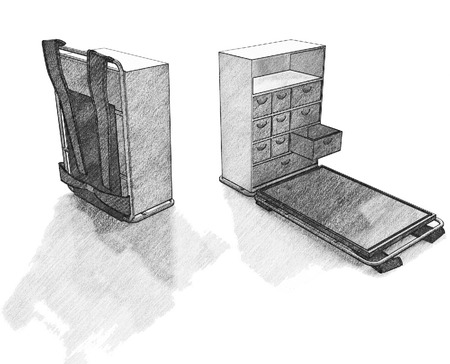U-Haul-spital Medical Trailer
 Monday, February 18, 2013 at 12:47AM
Monday, February 18, 2013 at 12:47AM  Unpacking Trailer Process When designing a mobile medical unit for Haiti, Alyssa Nealon & myself knew it had to be compact and easy to understand. We faced many challenges with materials, the terrain, and the ease of setup. In the end we designed an offroading trailer that housed 7 medical carts, loaded with supplies, and 6 tents with mosquito netting. We made the trailer blue and white to mimic the United Nations color scheme, which played a positive role in the Haitians lives. The design offers a multitude of setup options to allow for multiple scenarios, whether it is de to the amount of workers or difficulty of the terrain. Modularity was a driving force in this design. But, designing modularity in a simple way, so that the Haitians could understand it easily was a real challenge!
Unpacking Trailer Process When designing a mobile medical unit for Haiti, Alyssa Nealon & myself knew it had to be compact and easy to understand. We faced many challenges with materials, the terrain, and the ease of setup. In the end we designed an offroading trailer that housed 7 medical carts, loaded with supplies, and 6 tents with mosquito netting. We made the trailer blue and white to mimic the United Nations color scheme, which played a positive role in the Haitians lives. The design offers a multitude of setup options to allow for multiple scenarios, whether it is de to the amount of workers or difficulty of the terrain. Modularity was a driving force in this design. But, designing modularity in a simple way, so that the Haitians could understand it easily was a real challenge!
The Medical Carts serve a vital role in the U-Haul-spitals goals. It needed to serve as many purposes as possible in a very small footprint. The 2'W x 2'L x 3'H cart has 6 drawers, all of which are color coded for quick and easy location of items. The colors represent:
Gray- Evaluate
Blue- Administer
Green- Prescribe
Yellow- Emergency
Orange- Medicate
Each of the colored drawers house all of the supplies needed to do that particular task. The cart is also equipt with a pull out dictation tray for the nurse to use as a writing surface, a removable sharps container located on the back, heavy duty wheels on the back and adjustable feet on the front, 2 cushioned stools on top, and a locking mecanism on the side to be able to connect multiple carts together in case of the need for a gurney. When not being used as a gurney the 2 cushions, located on top, can be removed and unfold into two 1' x 2' stools for the nurse and the patient to sit on. The stools are upholstered with marine grade vinyl, similar to what is used on boats, so that it may be able to be cleaned easily.
 Perspective view of U-Haul-spital in use
Perspective view of U-Haul-spital in use
A few things critiques that were mentioned in the review were:
-Negatives-
the lack of thought on how the trailer connected with a mule
who owned and opperated the trailers before, during and after use
who was in charge of restocking the trailers after inital use
-Positives-
the color coding system of the carts
the amount of thought and research that went into the dispursing of the units
the modularity of the design
 Compact,
Compact,  Fast Setup,
Fast Setup,  Haiti,
Haiti,  Trailer in
Trailer in  Alyssa Nealon,
Alyssa Nealon,  Tiffiny Hall
Tiffiny Hall 
















